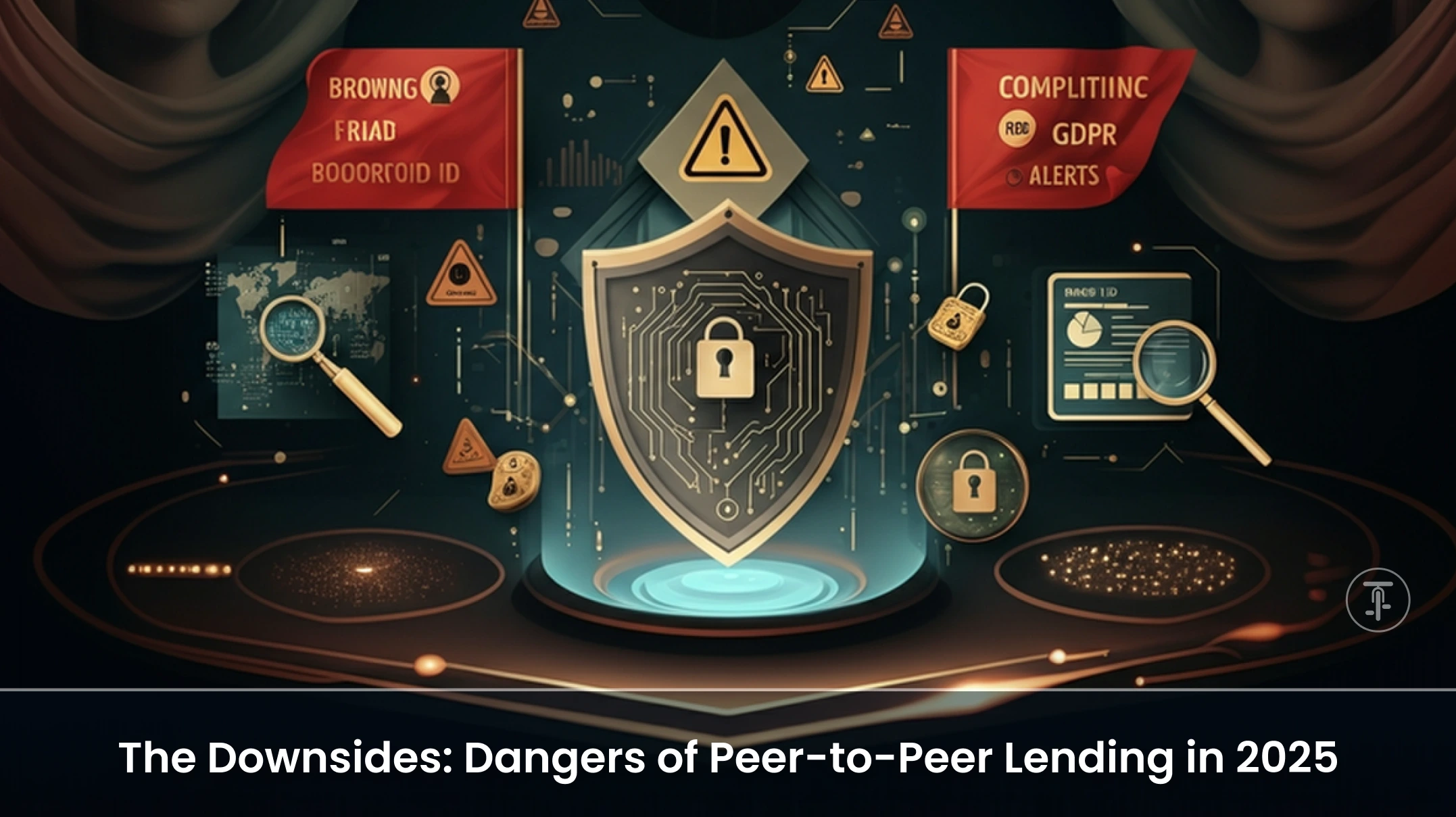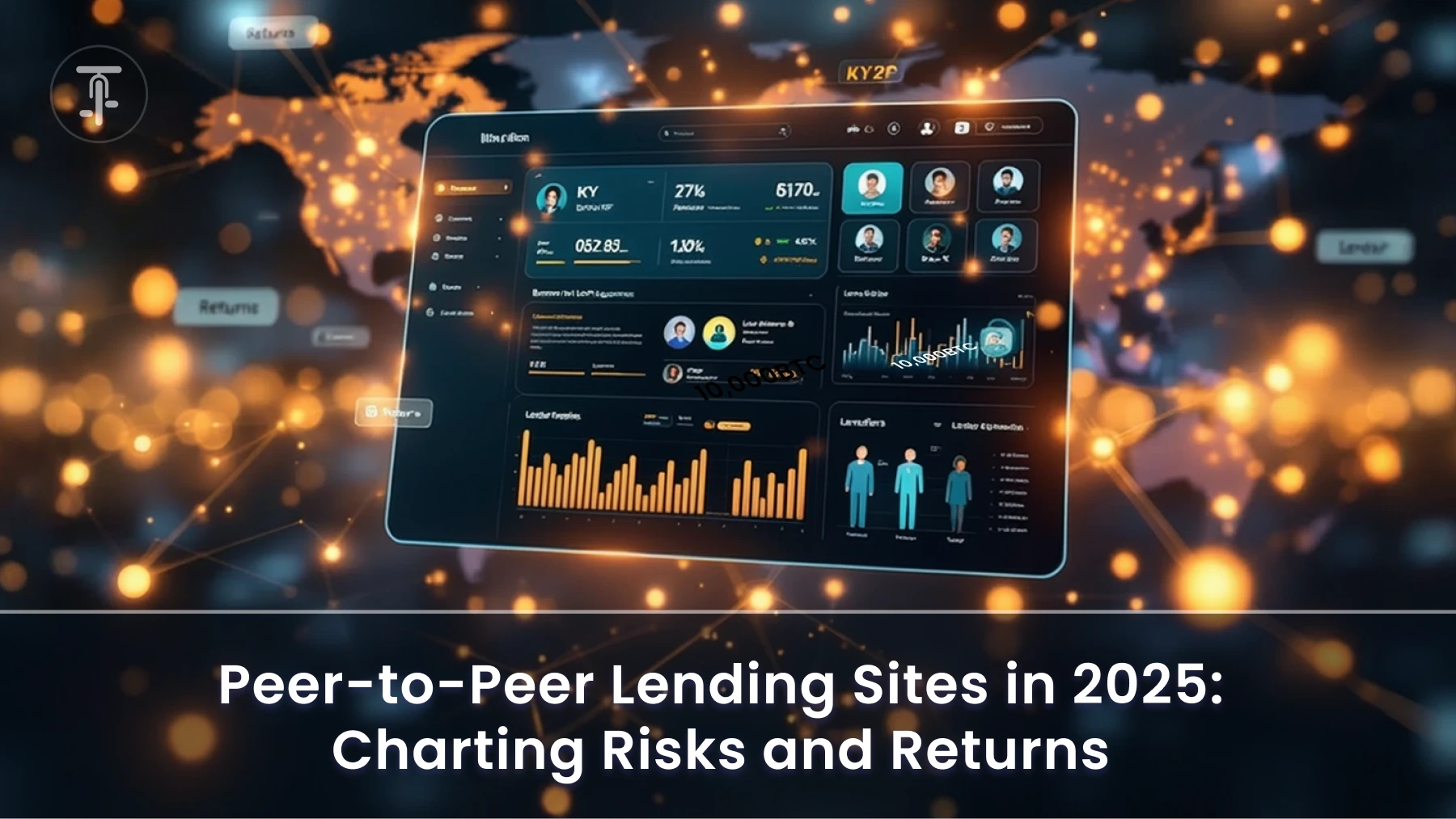Is P2P Lending Still A Reality?
The world of digital lending is seeing explosive growth, and peer-to-peer (P2P) platforms are again seen as significant fintech disruptors. The outlook suggests a dramatic growth in the market, with some estimates putting it potentially exceeding $500 billion globally by the year 2027, fueled by the potential for quicker, more universal, and decentralized banking options. Nevertheless, this expansion comes with added regulatory attention, AI integration into decision-making, and ongoing specters of credit defaults that require thoughtful contemplation.
We at Pedals Up engage in creating next-generation P2P platforms focused on compliance, security, and scalability. Here in this blog post, we are going to discuss the present risks and advantages of starting or investing in a peer-to-peer lending platform based on our practical experience and tested methodologies.
What Constitutes a Peer-to-Peer Lending Platform?
A peer-to-peer lending platform electronically brings individual lenders together with borrowers, thereby disintermediating incumbent banks. Peer-to-peer lending platforms make use of technologies such as AI, APIs, and even blockchain to enable computerization of essential processes such as credit scoring, KYC (Know Your Customer), loan management, and repayment processing.
Characteristics:
- Automated lender-borrower matching
- Credit scoring modules enabled by AI
- KYC/AML (Anti-Money Laundering) compliance modules
- Analytical dashboard for users
- Smart contracts (in Web3-enabled variations)
The Upsides of P2P Lending in 2025
- Engaging Returns for Investors: P2P sites tend to provide annual returns that are often more competitive than bonds or savings accounts. Example: LendingClub, an American P2P site, has shown fluctuating investor returns over time, typically in the mid to high single digits on average over multi-year intervals.
- Increased Access for Borrowers: Leveraging alternative data sources (mobile behavior, shopping history), P2P sites can lend money to those who may have previously struggled to obtain credit from legacy banks, such as new-to-credit consumers.
- Lowered Operational Overhead: Cloud-native architecture and API-first solutions enable fintech businesses to deploy and run lending platforms with little of the investment required for physical infrastructure.
- Scalability Through Digital Infrastructure: Unlike traditional brick-and-mortar lenders, P2P platforms are inherently designed for global expansion. Integrating KYC providers, payment gateways, and risk assessment engines facilitates operations across diverse geographical locations.
The Downsides of Peer-to-Peer Lending in 2025

- Heightened Default Risks: Economic conditions may affect borrower repayment capacity, which can result in higher default rates on lending platforms. Delinquency trends should be closely monitored. 2024 reports predicted concerns regarding growing delinquencies across many loaning platforms, including online-oriented lending sectors.
- Increased Regulatory Focus: The P2P lending segment is currently facing intense regulatory scrutiny across various regions. In the United States, platforms are under the threat of potential SEC investigations concerning securities registration requirements. Meanwhile, in India, the Reserve Bank of India mandates that P2P platforms register as non-banking financial companies (NBFC-P2P). In the European Union, compliance is further complicated by diverse GDPR and local requirements. To address these challenges, Pedals Up has implemented dynamic compliance layers, including real-time KYC and AML modules, digital audit trails, and modular legal engines, ensuring that platforms can navigate the complex regulatory landscape effectively.
- Fraud Prevalence, Loan Stacking, and Identity Theft: AI-facilitated fraud is an increasing concern, as fraudulent actors utilize advanced techniques. Mitigation Measures include: Liveness detection through facial recognition, e-KYC and PAN/Aadhaar authentication (specific to India), and loan stacking detection using federated databases and behavioral analytics.
- Liquidity Constraints for Lenders: Investments in P2P lending tend to be less liquid compared to some other financial products. Lenders may not be able to access their money in a timely manner, particularly in case of borrower defaults or if there isn’t a strong secondary market.
Funding Circle – Empowering UK SMEs
Background: Funding Circle started in 2010 and was the first to offer P2P lending for small businesses in the UK, providing a disruptive alternative to traditional bank lending.
Challenge: SMEs were subject to slow loan approval times and excessive interest rates from banks, which restricted their growth.
Solution: Funding Circle developed a digital-led platform featuring advanced credit-scoring algorithms that analyze business accounts and trading history. This innovative approach is complemented by real-time accounting software integration, which ensures access to the most current borrower data. Additionally, the platform operates on a marketplace model, effectively connecting businesses seeking loans with both retail and institutional investors.
Results (as of 2024):
In recent times, there has been substantial aggregate lending to UK SMEs, exceeding £12 billion, highlighting a growing trend in the market. Institutional investors have experienced average annual net returns on term loans of approximately 5%, making this an attractive opportunity. Furthermore, loan decision times have dramatically decreased compared to traditional lenders, providing quicker access to capital for businesses. This focus on risk management has effectively kept aggregate default rates in check, ensuring stability in the lending environment.
Key Insight: Funding Circle’s model illustrates the potential for P2P platforms to successfully cover a niche market segment while delivering returns to investors through strong credit evaluation and risk management. Learn More: https://www.fundingcircle.com
Emerging Trends Shaping the Future of P2P Lending
- Embedded Finance & BNPL Synergy: P2P models are increasingly converging with Buy Now, Pay Later (BNPL) services to provide more flexible credit products for B2C and B2B use cases.
- Web3 P2P Lending: Decentralized Finance (DeFi) platforms are experimenting with decentralized credit models based on smart contracts and tokenized lending pools. Visit DeFi Lending: https://aave.com
- AI-Driven Risk Analytics: Sophisticated AI models are being employed to improve loan default forecasting based on analysis of varied data points.
Conclusion: High Potential, Calculated Risk
P2P lending in 2025 continues to present a compelling fintech opportunity, provided it is approached strategically with a strong focus on risk management and regulatory compliance. The potential for broader financial inclusion and digital scalability remains significant.
Pedals Up empowers fintechs and startups to build comprehensive lending ecosystems that are:
- Secure by design
- Fully compliant with local and international regulations
- Scalable through microservices and cloud-native technologies
- Easily integrated with AI, APIs, and big data analytics
Whether you’re starting a new P2P business or digitally developing your current lending business, we offer platforms from MVPs to large enterprise-level solutions.
Book a free consultation with our fintech development team today!




